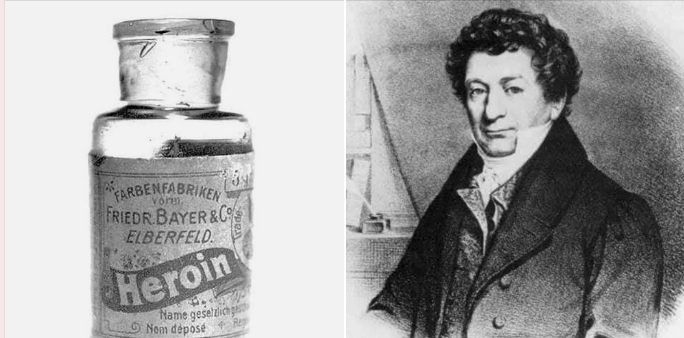The invention of heroin as a cough and pain reliever
Somniferum is a plant species that yields opium and poppy seeds.
The opium poppy was cultivated in Lower Mesopotamia as early as 3400 BC. Chemical analysis of opium in the 19th century revealed that most of its activity could be attributed to morphine.
Friedrich Wilhelm Adam Sartorner (born June 19, 1783 in Neuhaus (near Paderborn), died February 20, 1841 in Hamelin) was a German pharmacist who discovered morphine in 1806.
In 1806, the German chemist Friedrich Wilhelm Adam Sartorner isolated morphine from opium, a milky substance found in the ripe seed pods of the poppy plant. Morphine is the strongest naturally occurring pain reliever and is vital where other pain relievers fail. Side effects include depression, drowsiness, and slowed breathing and blood circulation.
In 1898, the German chemical company Bayer's attempt to find a non-addictive substitute for morphine led to the development of a morphine derivative called heroin.
In 1898, the German chemical company Bayer's attempt to find a non-addictive substitute for morphine led to the development of heroin, a morphine derivative. Heroin's pain control and analgesia properties are far more effective than morphine, and for more than two decades heroin's use against headaches and other minor pains has been brought to the general public.
The name “heroin” is used only when discussing its illegal form. When it is used in a medical setting, it is called diamorphine. The "pure heroin" form is usually the hydrochloride salt, diacetylmorphine hydrochloride. Diacetylmorphine was first synthesized in 1874 by an English chemist working at St. Mary's Hospital Medical School in London. C. R. By Alder Wright. He experimented with combining morphine with various acids. He boiled the anhydrous morphine alkaloid with acetic anhydride for several hours to produce a more potent form of acetylated morphine, now known as diacetylmorphine or morphine diacetate.

#blurt #blurtstory #nature #historic #chestnut #town #mistake #world